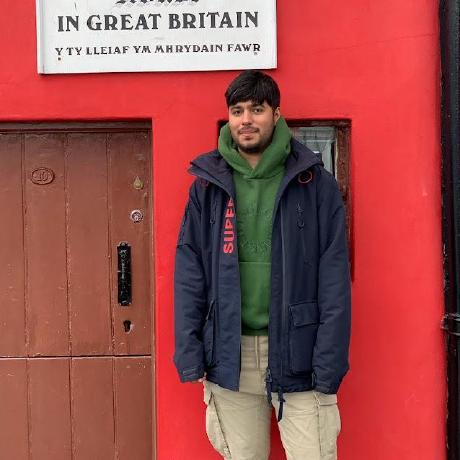From Facts to Insight: Bridging the Compositionality Gap in Language Models
Large language models (LLMs) such as GPT-3 have transformed natural language understanding by memorizing vast amounts of text. Yet, when faced with questions that require combining multiple pieces of knowledge—so-called compositional reasoning—even the biggest models stumble. In their paper Measuring and Narrowing the Compositionality Gap in Language Models, Press et al. introduce a new metric for this shortfall, show that it persists despite model scale, and propose practical prompting techniques to close it.
The Compositionality Gap: What and Why
Compositional reasoning asks a model not simply to recall one fact but to stitch together two or more facts in novel ways. For example:
“What is the calling code of the birthplace of Frida Kahlo?”
Even if an LLM knows:
- Frida Kahlo was born in Coyoacán.
- Mexico’s calling code is +52.
it may still fail to produce +52 as the combined answer. To quantify this failure mode, Press et al. define the compositionality gap:
Compositionality Gap =
(Number of 2-hop questions answered incorrectly despite both sub-questions being answered correctly)
÷ (Number of 2-hop questions for which both sub-questions are answered correctly)
This metric exposes how often an LM “knows” the pieces yet cannot compose them into the final answer.
Crafting a Diagnostic Benchmark: Compositional Celebrities
To systematically measure the gap, the authors introduce Compositional Celebrities (CC)—an 8.6 K-question, automatically generated dataset of 2-hop queries:
- Select a celebrity (e.g., Justin Bieber).
- Retrieve two facts about their birth (e.g., birth year = 1994; Masters Tournament champion = José María Olazábal).
- Combine them into a compositional query:
“Who won the Master’s Tournament in the year Justin Bieber was born?”
Key properties of CC:
- Unlikely combinations: The paired facts are common individually, but their conjunction rarely appears in any text corpus.
- Decomposability: Every question naturally splits into two sub-questions, allowing measurement of memorization vs. composition.
Scaling Alone Doesn’t Solve Composition
A natural hope is that simply increasing model size would improve both factual recall and reasoning. Press et al. evaluate the GPT-3 family (Ada → Davinci) on CC:
- 1-hop accuracy climbs steeply with size.
- 2-hop accuracy improves only marginally.
- Compositionality gap stays near ~40 % across all sizes (0.35 B → 175 B parameters).
This reveals that while larger models memorize ever more facts, they do not proportionally enhance their ability to compose learned knowledge.
Elicitive Prompting: Encouraging “Thought” in LLMs
To tackle this, the authors borrow and extend the idea of prompting LMs to “think aloud.” Two key methods emerge:
1. Chain-of-Thought (CoT)
- The model generates a free-form reasoning trace before the final answer.
- Improves multi-hop accuracy, but can be verbose or hard to parse.
2. Self-Ask Prompting
- A structured approach:
- Model decides if follow-up questions are needed.
- It explicitly emits each
Follow up:sub-question. - It provides each
Intermediate answer:in turn. - Finally, it states
So the final answer is:in concise form.
- By scaffolding decomposition and retrieval, self-ask dramatically narrows the compositionality gap.
Hybrid Reasoning: Plugging in a Search Engine
Self-ask’s clear sub-question boundaries make it trivial to integrate an external search API:
- LM generates
Follow up: When was X born? - System sends that to a search engine and retrieves “1994.”
- LM continues, using the fetched answer as if it were its own.
This Self-Ask + Search Engine (SA+SE) requires no fine-tuning or prompt changes—and yields further accuracy gains (often +10 pp) on CC and complementary benchmarks like 2WikiMultiHopQA, Musique, and Bamboogle.
Empirical Highlights
| Method | 2-hop Accuracy | Compositionality Gap |
|---|---|---|
| Direct Prompt | ~45% | ~40% |
| Chain-of-Thought | ~60% | ~25–30% |
| Self-Ask (ours) | ~75% | ~10–15% |
| Self-Ask + Search (ours) | ~85% | ~5–10% |
Implications for LLM Development
-
Diagnostic Clarity
The compositionality gap provides a targeted metric for multi-step reasoning beyond aggregate accuracy. -
Prompt Engineering Matters
Structured elicitive prompts like self-ask can unlock reasoning abilities that mere scale cannot. -
Hybrid Systems Are Powerful
Seamlessly combining LMs with external tools (search, databases) can bridge knowledge or reasoning shortfalls without retraining.
Future Directions
- Deeper Multi-Hop: Extend evaluation to 3-, 4-, or higher-order reasoning tasks.
- Multilingual & Multimodal: Test compositional abilities across languages and modalities (e.g., text + images).
- Architectural Innovations: Design model architectures that internalize explicit decomposition, rather than relying solely on prompting.
Conclusion
Press et al.’s work shines a spotlight on a critical blind spot of today’s LLMs: the gulf between knowing facts and combining them intelligently. By defining the compositionality gap and demonstrating that structured prompting and smart tool integration can dramatically narrow it, they offer both a diagnostic lens and a practical toolkit for the next generation of reasoning-capable language models.
🔗 Read the full paper:
Measuring and Narrowing the Compositionality Gap in Language Models (arXiv:2210.03350)
